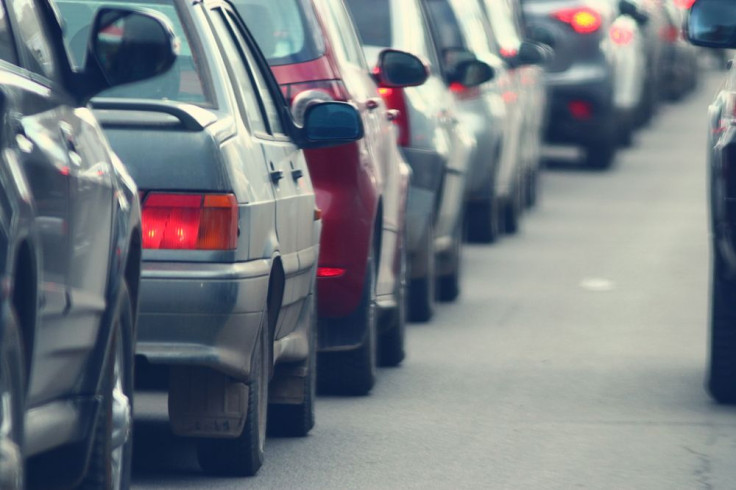Road Rage Is The Least Of Your Commuting Problems: Sitting At A Red Light Significantly Increases Exposure To Air Pollution

It’s safe to say that most do not enjoy their daily commute, and getting stuck in traffic can induce road rage in even the most patient of drivers. A recent study has found that being stuck in traffic is not just annoying but actually dangerous to your health. According to the researchers from the University of Surrey, as much as a quarter of your exposure to dangerous air pollutants occurs in the time commuters spend stopped at intersections.
Air pollution is considered one of the top 10 biggest risks to human health. According to the U.S. Environmental Protection Agency, exposure to air pollutants increases the risk of serious health conditions, such as liver damage, cancer, and nervous system damage.
"Air pollution was recently placed in the top 10 health risks faced by human beings globally, with the World Health Organization linking air pollution to seven million premature deaths every year," said lead author, Dr Prashant Kumar in the press release. Infants who survive despite their exposure, for example, have an increased risk of developing ADHD later in life.
Air pollution has also been linked to mental health problems, with a recent study suggesting that air pollution may play a role in the development of autism and schizophrenia.
In an effort to help the population decrease their overall exposure to air pollution, researchers from the University of Surrey sought find out where the majority of this exposure was occurring.
For their study, the team monitored drivers' exposure to air pollution at various points in their daily commute. On average, commuters spend about an hour and a half behind the wheel. Although only around two percent of this journey time is spent stopped at traffic lights, this is where a quarter of all air pollution exposure occurs. Intersections have the prime conditions for maximum air pollution exposure. The constant decelerating and revving of the car engines causes a significant spike in air pollution.
Also, the closer the cars are together, the more concentrated this pollution tends to be. Trapped inside a car with nowhere to go, drivers are forced to breathe in this more heavily polluted air for longer periods of time. Pedestrians who frequently travel intersections on foot are also at risk.
The researchers emphasize that the purpose of their study was not to get the world to give up driving, but merely to raise awareness on the issue. There are little things that you can do to help limit your exposure, however. "Local transport agencies could also help by synchronizing traffic signals to reduce waiting time and consider alternative traffic management systems such as flyovers," Kumar said.
In the meantime, there are little things the public can do to limit their exposure to pollutants at intersections. “The best ways to limit your exposure is to keep vehicle windows shut, fans off and try to increase the distance between you and the car in front where possible,” Kumar added.
He suggests it might be in the best interest for pedestrians to look into a new route with fewer intersections.
There is good news, however. Last year, the EPA reported that the United States is making process in their efforts to lower toxic urban air. The agency reported that there has been an 84 percent decrease in lead and 64 percent decrease in benzene found in outdoor air. Efforts to remove arsenic and nickel from the air are also going well.



























